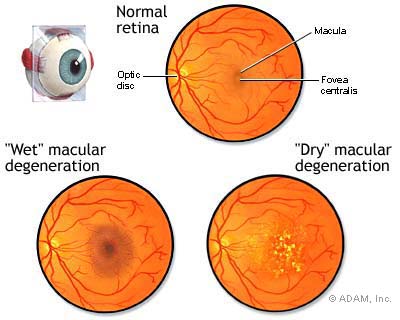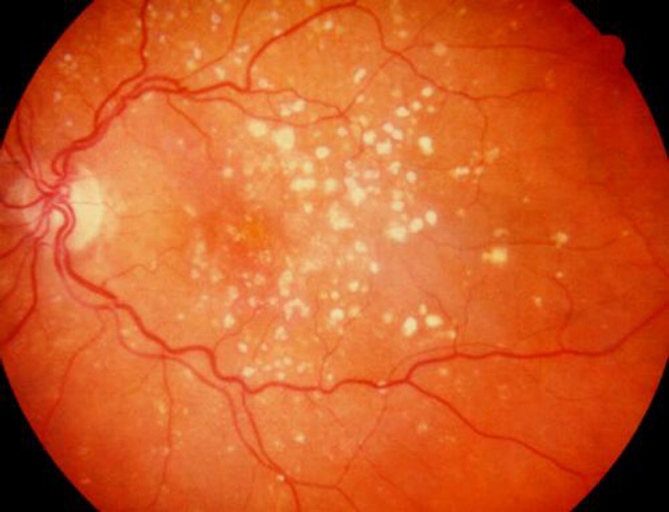Page Contents
WHAT IS IT?
Macular degeneration refers quite literally to the degeneration of the macula. Dry macular degeneration (nonexudative) has a specific etiology (described below) and is more common then wet macular degeneration.

WHAT CAUSES IT?
Dry macular degeneration is the most common and is caused by the deposition of extracellular material (drusen deposits) in/beneath the Bruch membrane and the retinal pigment epithelium.
WHY IS IT A PROBLEM?
The degeneration of the macula will cause distortion (metamorphopsia) and eventually can lead to the loss of central vision (scotomas)
WHAT MAKES US SUSPECT IT?
Risk factors
Caucasian race, female sex, smoking, family history of macular degeneration
Initial Presentation
Common Chief Complaints:
- Loss of vision: that is gradual and painless
Physical Exam Findings
Vision exam can reveal:
- Decreased visual acuity
- Impaired central vision (central scotoma)
HOW DO WE CONFIRM A DIAGNOSIS?
Fundoscopy will reveal pigmented disturbances (drusen deposits) in the macular region.

HOW DO WE TREAT IT?
Prevent progression using a combination of:
- Multivitamin supplements
- Antioxidant supplements
HOW WELL DO THE PATIENTS DO?
Prognosis can vary, but in may cases macular degeneration will lead to blindness.
WAS THERE A WAY TO PREVENT IT?
This is an area of investigation, the data is too extensive to discuss on this page but can be explored more here.
WHAT ELSE ARE WE WORRIED ABOUT?
Permanent blindness is often caused by macular degeneration.
ARCHIVE OF STANDARDIZED EXAM QUESTIONS
This archive compiles standardized exam questions that relate to this topic.
FURTHER READING
Page Updated: 07.16.2016